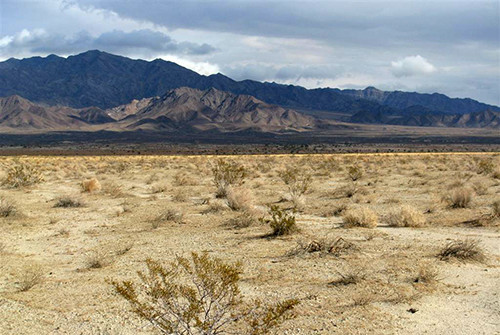 HELIX Environmental Planning (HELIX) was under contract to Aspen Environmental Group on an as-needed basis to provide impact analyses for proposed solar energy projects under review by the California Energy Commission (CEC). HELIX conducted field assessments, including evaluating the potential for listed and sensitive plant and animal species on each site. HELIX also analyzed the biological impacts of alternatives considered in the Alternatives Assessment sections of the Staff Assessment/Draft Environmental Impact Statement (SA/DEIS) for the following proposed solar power projects:
HELIX Environmental Planning (HELIX) was under contract to Aspen Environmental Group on an as-needed basis to provide impact analyses for proposed solar energy projects under review by the California Energy Commission (CEC). HELIX conducted field assessments, including evaluating the potential for listed and sensitive plant and animal species on each site. HELIX also analyzed the biological impacts of alternatives considered in the Alternatives Assessment sections of the Staff Assessment/Draft Environmental Impact Statement (SA/DEIS) for the following proposed solar power projects:
- Ridgecrest Solar Power Project, Kern County (3,920-acre proposed Project site study area and 2,240-acre alternative site study area) – Habitat assessments conducted for desert tortoise and burrowing owl
- Blythe Solar Power Project, Riverside County (7,030-acre proposed Project site study area and 6,207-acre alternative site study area) – Habitat assessments conducted for desert tortoise and burrowing owl
- Genesis Solar Energy Project, Riverside County (4,640-acre proposed Project site study area and 2,137-acre alternative site study area, and three reconfigurations of the proposed project site) – Habitat assessments conducted for burrowing owl, desert tortoise, and Mohave fringe-toed lizard
- Palen Solar Power Project, Riverside County (3,871-acre proposed Project site study area and 5,968-acre alternative site study area) – Habitat assessments conducted for burrowing owl, desert tortoise, and Mohave fringe-toed lizard
- Stirling Energy Systems Solar One Power Project, San Bernardino County (8,230-acre proposed Project site study area and 4,873-acre alternative study area) – Habitat assessments conducted for burrowing owl, desert tortoise, and Mohave fringe-toed lizard
- Stirling Energy Systems Solar Two Power Project, Imperial County (6,500-acre proposed project site study area and three alternative sites comprising 15,052 acres) – Habitat assessments conducted for burrowing owl and flat-tailed horned lizard
